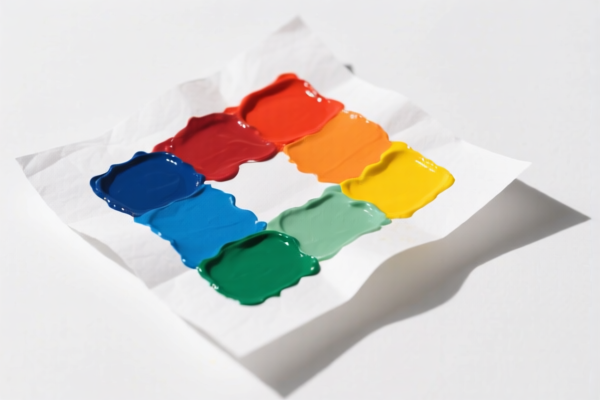| HS Code | Official Doc | Tariff Rate | Origin | Destination | Effective Date |
|---|---|---|---|---|---|
| 8424909080 | Doc | 80.0% | CN | US | 2025-05-12 |
| 8487900080 | Doc | 83.9% | CN | US | 2025-05-12 |
| 8487900040 | Doc | 58.9% | CN | US | 2025-05-12 |
| 7326200055 | Doc | 83.9% | CN | US | 2025-05-12 |
| 7326908675 | Doc | 82.9% | CN | US | 2025-05-12 |
| 7323997000 | Doc | 60.3% | CN | US | 2025-05-12 |
| 7323999080 | Doc | 83.4% | CN | US | 2025-05-12 |
| 5601300000 | Doc | 55.0% | CN | US | 2025-05-12 |
| 5601290090 | Doc | 59.0% | CN | US | 2025-05-12 |
| 5603910090 | Doc | 55.0% | CN | US | 2025-05-12 |
| 5602909000 | Doc | 52.9¢/kg + 8%+55.0% | CN | US | 2025-05-12 |
| 5602290000 | Doc | 61.3% | CN | US | 2025-05-12 |




Paint Nozzle Filter
A paint nozzle filter, also known as a spray gun filter or strainer, is a component used in spray application equipment to remove particulate contaminants from the paint before it reaches the nozzle. These filters are crucial for achieving a high-quality finish and preventing spray gun malfunctions.
Material:
- Stainless Steel: Most common material due to its durability, corrosion resistance, and compatibility with a wide range of paints. Mesh sizes vary.
- Nylon: Often used for water-based paints and coatings. Less expensive than stainless steel, but may not be suitable for all solvents.
- Bronze: Used in some applications, offering good corrosion resistance.
- Plastic: Found in disposable filters for low-volume applications.
Purpose:
- Prevent Clogging: The primary function is to prevent solid particles (dried paint, skin, debris) from entering the nozzle, which can cause clogs, inconsistent spray patterns, and reduced gun performance.
- Improve Finish Quality: By removing contaminants, filters help ensure a smooth, even finish free from imperfections like orange peel, speckling, or blocked spray patterns.
- Protect Spray Gun Components: Filters safeguard the internal components of the spray gun, such as the needle, seat, and fluid passages, from damage caused by abrasive particles.
Function:
Paint nozzle filters operate through a simple mechanical filtration process. Paint is forced through the filter media, which traps particles larger than the specified mesh size. The mesh size is measured in microns (µm), with smaller micron ratings providing finer filtration.
Usage Scenarios:
- Automotive Painting: Essential for achieving a flawless finish on vehicles.
- Wood Finishing: Used in furniture manufacturing, cabinetry, and other wood coating applications.
- Industrial Coating: Applied in a wide range of industrial applications, including metal finishing, equipment coating, and protective coatings.
- DIY Painting Projects: Used by hobbyists and professionals alike for various painting tasks.
Common Types:
- Inline Filters: Installed between the paint source and the spray gun. Offer a higher filtration capacity and are suitable for larger projects.
- Suction Strainers: Located inside the paint container, these filters prevent large debris from being drawn into the spray gun.
- Nozzle Filters/Screens: Small filters placed directly within the spray gun nozzle, providing a final layer of filtration. Often disposable.
- Cone Filters: Typically used with gravity-fed spray guns, these filters are placed within the paint cup.
- Paper Filters: Disposable filters used for water-based paints and quick cleanup.
- Reusable Filters: Made of stainless steel or nylon, these filters can be cleaned and reused multiple times.
Maintenance:
Regular cleaning or replacement of paint nozzle filters is crucial for optimal performance. The frequency of maintenance depends on the type of paint being used, the volume of paint sprayed, and the cleanliness of the paint source. Clogged filters should be replaced immediately to prevent damage to the spray gun and ensure a high-quality finish.
Paint nozzle filters are components used in spraying applications to remove impurities from liquids or powders before they are projected. They are typically found in mechanical appliances for dispersing or spraying liquids, and can be made of various materials.
The following HS codes are relevant based on the provided reference material:
-
8424909080: This HS code covers “Mechanical appliances (whether or not hand operated) for projecting, dispersing or spraying liquids or powders; fire extinguishers, whether or not charged; spray guns and similar appliances; steam or sand blasting machines and similar jet projecting machines; parts thereof: Parts: Other Other”. This is a broad category encompassing parts for spray guns and similar appliances, which would include paint nozzle filters.
- 84: Chapter 84 relates to Nuclear reactors, boilers, machinery and mechanical appliances; parts thereof.
- 24: Heading 8424 specifically covers machinery for projecting, dispersing or spraying liquids or powders.
- 90: Subheading 842490 covers parts of the aforementioned machinery, with '9080' indicating 'Other Other'.
-
7326200055: This HS code covers “Other articles of iron or steel: Articles of iron or steel wire Paint roller frames”. While specifically mentioning paint roller frames, it falls under the broader category of articles of iron or steel, which could include filters made from iron or steel wire.
- 73: Chapter 73 relates to articles of iron or steel.
- 26: Heading 7326 specifically covers articles of iron or steel wire.
- 20: Subheading 732620 covers articles of iron or steel wire, with '200055' indicating 'Paint roller frames'.
-
7326908675: This HS code covers “Other articles of iron or steel: Other: Other: Other: Other Paint roller frames (other than of iron or steel wire)”. This is a more specific category for paint roller frames not made of iron or steel wire, and could potentially include filters made from other materials.
- 73: Chapter 73 relates to articles of iron or steel.
- 26: Heading 7326 specifically covers articles of iron or steel.
- 90: Subheading 732690 covers other articles of iron or steel, with '908675' indicating 'Paint roller frames (other than of iron or steel wire)'.
Regarding HS code 8424909080, please note the total tax rate is 80.0%, comprising a 0.0% basic tariff, a 25.0% additional tariff, and a 30.0% additional tariff effective April 2, 2025. Additionally, a 25% additional tariff applies to steel and aluminum products.
Regarding HS codes 7326200055 and 7326908675, the total tax rate is 83.9%, comprising a 3.9% basic tariff, a 25.0% additional tariff, and a 30.0% additional tariff effective April 2, 2025. Additionally, a 25% additional tariff applies to steel and aluminum products.
Customer Reviews
No reviews yet.